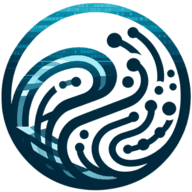How Do You Effectively Communicate Complex Technical Information?
In the digital age, bridging the gap between technical complexity and stakeholder comprehension is a vital skill. We've gathered insights from IT professionals, including Directors of IT and Full Stack Developers, on this very topic. From engaging with interactive visual aids to translating tech-speak with ChatGPT and analogies, discover five effective techniques for communicating complex technical information.
- Engage with Interactive Visual Aids
- Use Real-Life Scenarios and Visuals
- Tailor Communication to Audience Understanding
- Translate with ChatGPT and Analogies
- Combine PRDs with Wireframes and Mock-ups
Engage with Interactive Visual Aids
At Go Technology Group, an effective technique we've found for communicating complex technical information to non-technical stakeholders is through fully engaging with our customers using their technology tools, either in person or through interactive remote sessions. By leveraging visual aids like infographics and real-time demonstrations, we ensure clear visual representation and immediate feedback. This approach is part of our Managed IT Service offerings and allows stakeholders to ask questions and understand the process in real time.
We make it a priority to avoid technical jargon at all costs. Instead, we simplify the language and break down the information into manageable, relatable chunks. For example, rather than saying 'we need to configure the network firewall rules,' we might explain it as 'we are setting up security measures to protect your data from unauthorized access.'
Approaching clients on their own terms, using tools they are familiar with, we ensure they are not only informed but also confident in their understanding of the technology solutions we are implementing. This approach fosters a collaborative and transparent environment, ultimately leading to more successful and satisfying outcomes for our clients.

Use Real-Life Scenarios and Visuals
Using real-life scenarios is the best way to communicate complex technical information to a non-technical audience. Referring to a case study or day-to-day life example helps users connect better with the technical concepts. Using visuals, diagrams, or animations is one of the easy ways to share information.
Talking about pixels to explain noise in an image could be difficult for some to understand. However, referring to an image divided into horizontal and vertical lines and showing each square as a pixel would be better.

Tailor Communication to Audience Understanding
A big part of my job is understanding complex technical information and communicating it to virtually all the stakeholders involved.
This is easier said than done. Business professionals tend to use different vocabularies. Hence, you should always start by zeroing in on your target audience.
A software developer has zero qualms about understanding a feature when you explain it in terms of microservices, or front-end, or back-end. In fact, they tend to prefer it that way.
On the other hand, the end-user is seldom interested in the technical details. They are more interested in features and the benefits that follow.
The one technique you must always depend upon is to study your target audience and then communicate the information in the language they know and care about.
For example, not upgrading your web server means lower network bandwidth for the software engineer, slower page loads for the end-user, and fewer website visits for the CEO.
So, understand the implications for your end-user and communicate the same in a language they understand.

Translate with ChatGPT and Analogies
Using ChatGPT to translate complex technical information into relatable content offers several key benefits. It enhances understanding by bridging the gap between technical jargon and everyday language, making intricate concepts easier for non-technical stakeholders to grasp. This clarity and simplicity ensure that key points are communicated effectively, while engaging storytelling techniques keep the audience interested and help with retention.
The Analogies and Metaphors technique involves simplifying complex technical concepts by comparing them to familiar, everyday experiences. This method helps non-technical stakeholders understand intricate details by relating them to something they already know.
Prompt engineering with ChatGPT can help to quickly transform technical documentation.
Example prompt:
"Rewrite the above technical documentation on data encryption using the analogies and metaphors approach to make it understandable for non-technical stakeholders. Compare data encryption to sending a locked treasure chest with a unique key."
Excerpt from the answer:
"There are two types of keys you can use: one where the same key locks and unlocks the chest (symmetric encryption), and one where you have two keys—one to lock and another to unlock (asymmetric encryption). The first method is quick and efficient, like using a padlock, but both parties need to securely share the key. The second method, like a more complex security system, is more secure for sharing the key over the internet because the unlocking key is kept private."

Combine PRDs with Wireframes and Mock-ups
One effective technique to communicate complex technical information to non-technical stakeholders is through the creation of detailed product requirements documents (PRDs) complemented by wireframes and mock-ups. Product requirements documents clearly outline the features and functionalities of a software application or product in plain language, avoiding technical jargon.
Wireframes and mock-ups play a crucial role by providing a visual representation of the application. They help stakeholders visualize how the final product will look and function, making it easier to understand the proposed features. By using annotated wireframes, we can illustrate specific user interactions, screen flows, and interface elements, which bridge the gap between technical concepts and stakeholder comprehension.
Additionally, interactive prototypes can be developed to allow stakeholders to experience a simulated version of the application. This hands-on approach helps in conveying the functionality and user experience more effectively than static images.
Regular review sessions are conducted to walk stakeholders through the PRDs and visual aids, encouraging feedback and ensuring alignment with their expectations. This combination of clear documentation and visual communication tools ensures that project and product information is accessible and understandable, facilitating better decision-making and collaboration so non-technical stakeholders (in our case, customers) end up with the product they want and need.


